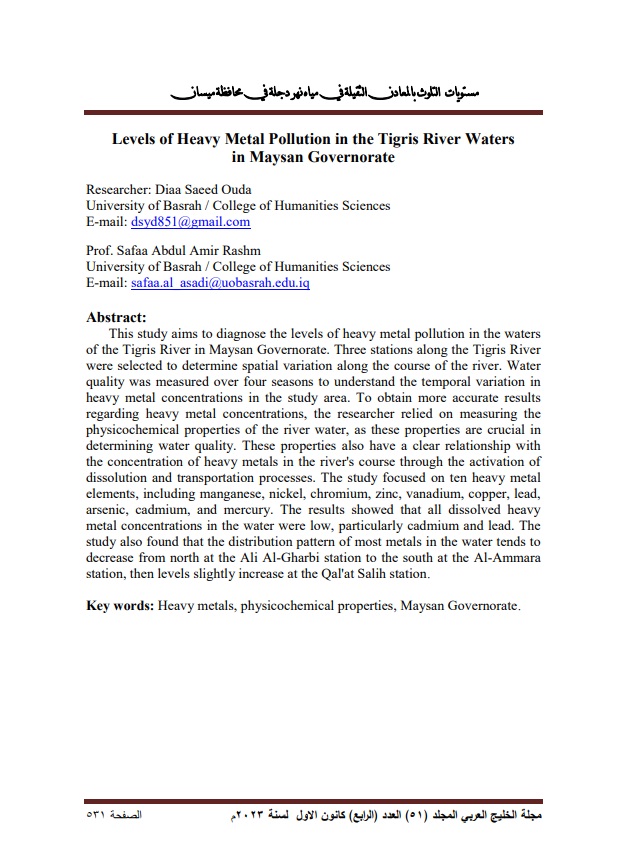Levels of Heavy Metal Pollution in the Tigris River Waters in Maysan Governorate
Keywords:
Heavy metals, physicochemical properties, Maysan GovernorateAbstract
This study aims to diagnose the levels of heavy metal pollution in the waters of the Tigris River in Maysan Governorate. Three stations along the Tigris River were selected to determine spatial variation along the course of the river. Water quality was measured over four seasons to understand the temporal variation in heavy metal concentrations in the study area. To obtain more accurate results regarding heavy metal concentrations, the researcher relied on measuring the physicochemical properties of the river water, as these properties are crucial in determining water quality. These properties also have a clear relationship with the concentration of heavy metals in the river's course through the activation of dissolution and transportation processes. The study focused on ten heavy metal elements, including manganese, nickel, chromium, zinc, vanadium, copper, lead, arsenic, cadmium, and mercury. The results showed that all dissolved heavy metal concentrations in the water were low, particularly cadmium and lead. The study also found that the distribution pattern of most metals in the water tends to decrease from north at the Ali Al-Gharbi station to the south at the Al-Ammara station, then levels slightly increase at the Qal'at Salih station.




